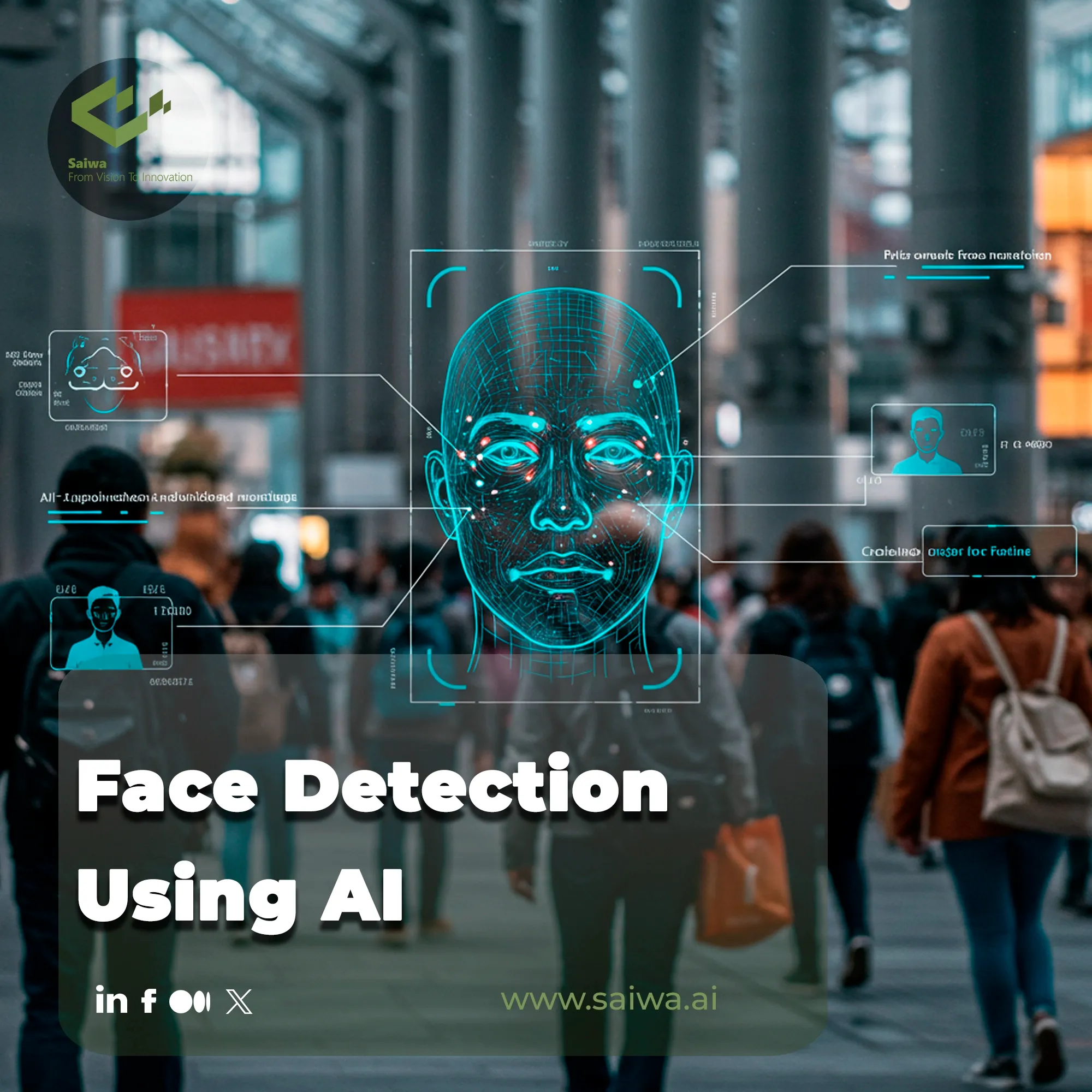Artificial intelligence is fundamentally reshaping how we interact with the digital world, moving beyond theoretical concepts into practical, impactful tools. Among these, the technology for identifying human faces in digital media has become a cornerstone of modern innovation, quietly powering everything from smartphone security to advanced marketing analytics.
Platforms like Saiwa’s Fraime are at the forefront, offering sophisticated computer vision services. This article breaks down the core technology behind AI-powered face detection, explores its real-world applications and key advantages, and discusses the frameworks used for implementation.
What Is AI-Based Face Detection?
AI-based face detection is a computer vision technology that locates and identifies the presence of human faces within digital images or video frames. Crucially, its primary function is detection—distinguishing a face from other objects—rather than recognition, which involves identifying a specific individual.
How AI Detects Faces in Images and Videos?
The process involves several intelligent stages. Initially, the AI refines the image quality to reduce noise. It then scans the image for patterns—colors, shapes, and pixel gradients—that match features learned from vast datasets. Once a potential face is located, the system creates a Bounding box annotation around it, confirming the detection and marking its coordinates for further processing.
Use Cases of Face Detection with AI

The practical applications of this technology are exceptionally diverse, spanning numerous industries to enhance both efficiency and user experience. Below, we explore a few key sectors where AI-driven face detection is making a significant impact.
Security and Surveillance
In security systems, AI is used for real-time threat monitoring in public spaces and for automating access control in secure facilities, creating a more responsive and reliable environment.
Smartphones and Consumer Devices
From unlocking your phone with a glance (Face Unlock) to the autofocus feature in digital cameras, face detection personalizes and simplifies our daily interactions with technology.
Healthcare
This technology can assist in patient monitoring by detecting subtle facial cues. It also has emerging applications in diagnosing certain conditions based on facial morphology analysis.
Retail and Marketing
Retailers leverage face detection to analyze in-store customer traffic and gather anonymous demographic data, helping them optimize store layouts and tailor marketing campaigns effectively.
Read Also : Face Detection in Images
Key Benefits of Using AI for Face Detection
Adopting face detection using AI provides several distinct operational advantages that drive its widespread implementation. Let’s explore some of the most significant benefits:
High accuracy and real-time performance: Modern algorithms can process thousands of images or live video streams with remarkable speed and precision.
Robust detection under varied conditions: Advanced models can successfully identify faces even with changes in lighting, angle, pose, and partial obstruction.
Scalability for large image/video datasets: The technology is built to handle massive volumes of visual data, making it ideal for large-scale enterprise applications.
Integration with other AI services: It seamlessly combines with other AI capabilities like facial recognition, emotion analysis, or advanced pose estimation.

The Role of Machine Learning in AI Face Detection
Machine learning in AI Face Detection is teaching algorithms to recognize faces from large sets of labeled images. Using techniques like convolutional neural networks (CNNs), these models can automatically identify key facial features, such as the eyes, nose, and mouth. This allows them to distinguish faces from complex backgrounds.
This training enables the system to perform reliably under challenging conditions, including varied lighting, different angles, partial occlusions, and diverse facial expressions. Through continuous exposure to new data, ML-powered face detection systems become more accurate and robust, providing the precision necessary for applications in security, healthcare, retail, and more.
Common Tools and Frameworks for Implementation
For developers looking to implement this technology, a rich ecosystem of powerful tools and frameworks simplifies the development process. Here are some of the most common ones:
OpenCV and Dlib: Foundational open-source libraries offering a wide range of computer vision algorithms.
TensorFlow and PyTorch: Comprehensive deep learning frameworks for building and training custom models.
Pre-trained models (e.g., MTCNN, YOLO-Face): Ready-to-use models that offer high accuracy out-of-the-box.
Ethical Considerations and Limitations
However, the power of Face Detection Using AI comes with significant responsibilities and technical challenges. It is vital to address these issues thoughtfully:
Privacy and consent issues: Collecting facial data requires transparent policies and clear user consent to prevent misuse.
Bias and fairness in detection: Models trained on non-diverse datasets can exhibit lower accuracy for underrepresented demographic groups.
Data security and regulatory compliance: Protecting stored facial data from breaches and adhering to regulations like GDPR is paramount.
Conclusion
AI-based face detection has evolved from a novel concept into a powerful real-world tool that enhances various sectors, including security and retail. Its speed, accuracy, and adaptability make it a critical asset in today’s data-driven environments. Although the technology offers remarkable benefits, its responsible implementation, mindful of privacy, fairness, and compliance, is essential for long-term success. As platforms like Fraime continue to innovate, face detection will become increasingly integral to our interaction with the digital world.
Note: Some visuals on this blog post were generated using AI tools.

